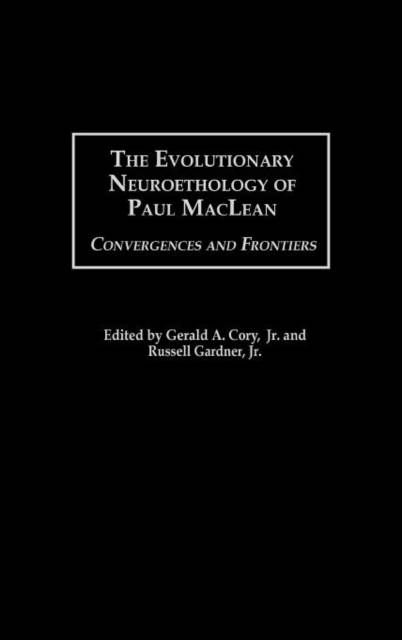
Wil je zeker zijn dat je cadeautjes op tijd onder de kerstboom liggen? Onze winkels ontvangen jou met open armen. Nu met extra openingsuren op zondag!
- Afhalen na 1 uur in een winkel met voorraad
- Gratis thuislevering in België vanaf € 30
- Ruim aanbod met 7 miljoen producten
Wil je zeker zijn dat je cadeautjes op tijd onder de kerstboom liggen? Onze winkels ontvangen jou met open armen. Nu met extra openingsuren op zondag!
- Afhalen na 1 uur in een winkel met voorraad
- Gratis thuislevering in België vanaf € 30
- Ruim aanbod met 7 miljoen producten
Zoeken
The Evolutionary Neuroethology of Paul MacLean
Convergences and Frontiers
€ 217,45
+ 434 punten
Omschrijving
In the mid-20th century, integrative efforts began concerning the brain and its social and humanistic functions. These efforts were led by Paul D. MacLean's integrative research and thought. As the century ended, however, such efforts were lost in the surge of new effort in brain and genome research. Nobel Prizes were awarded on biochemical and cellular findings relevant to psychiatry. Findings on these levels seemed to provide ultimate answers.
By contrast, Cory, Gardner, and their contributors provide a more comprehensive view by extending MacLean's findings and integrative theory. Supported by new findings and extended by critical analyses of current work, the collection provides foundations for more integrative efforts that the editors and contributors believe will prevail increasingly in coming decades. Looked at from another vantage point, therapeutic, social, economic, and politial sciences have proceeded wtihout operating theories congruent with, or based on, brain functions. Across-species perspectives have been lacking. This collection redresses this problem and leads the way toward more comprehensive 21st century research on the one hand, and practical applications on the other. Multiple approaches extend from modeling efforts to across-species comparisons, to the basic science of psychiatry to theoretical explanations of political and economic systems. But most important, these essays abolish the Berlin wall that currently separates the brain from its social functions. A major guide for scholars, students, and researchers involved in the neurobehavioral sciences, for psychologists, psychiatrists, and others involved with human clinical sciences, and for social scientists concerned with the impact of the nervous system and its function.Specificaties
Betrokkenen
- Uitgeverij:
Inhoud
- Aantal bladzijden:
- 472
- Taal:
- Engels
- Reeks:
Eigenschappen
- Productcode (EAN):
- 9780275972196
- Verschijningsdatum:
- 30/12/2002
- Uitvoering:
- Hardcover
- Formaat:
- Genaaid
- Afmetingen:
- 160 mm x 247 mm
- Gewicht:
- 771 g

Alleen bij Standaard Boekhandel
+ 434 punten op je klantenkaart van Standaard Boekhandel
Beoordelingen
We publiceren alleen reviews die voldoen aan de voorwaarden voor reviews. Bekijk onze voorwaarden voor reviews.










